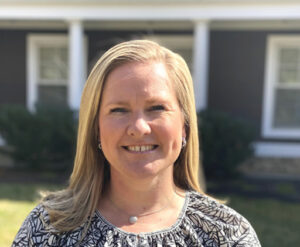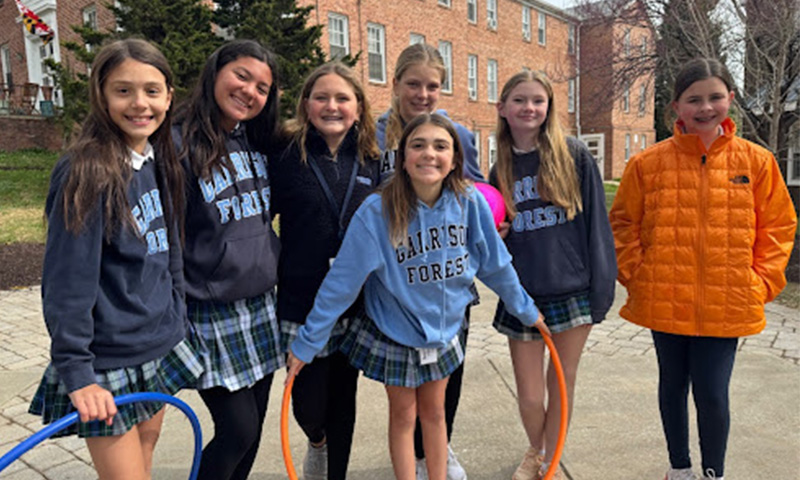Middle School Missteps Why Partnership Matters More Than Perfection by Lauren Anderson
When I tell people that I’m the head of a middle school for girls, I almost always get the same reaction: “Wow, I hated middle school!” or “Seriously? Middle school girls are so mean.” While the comments are often made with a laugh, they reflect something deeper; people are not actually reacting to the idea of middle school girls, but rather to their own adolescent experiences.
Middle school is undeniably a time of complexity and change. Students are navigating a unique stage of development—no longer young children, not yet adults. They oscillate between independence and vulnerability, confidence and insecurity. They are figuring out who they are while simultaneously juggling social pressures, academic demands, and a whirlwind of emotions, all with a brain still under construction.
At lunch, a student may be wondering where to sit. In science, she might worry about who will be her partner. She may be trying to focus on a math test while reliving the group chat from the night before or stressing about how to finish an English paper between lacrosse practice and piano lessons. It’s a lot. And in the midst of all this, they will make mistakes, sometimes big ones.
As educators and caregivers, we should expect missteps. When a school reaches out to share that a student has made a mistake, cheated on a test, hurt a peer’s feelings, or acted out, it is a moment that can define not just the outcome of the incident, but also a child’s growth and resilience. And in that moment, how a parent responds becomes the first domino in a long chain reaction.
The common scenarios go something like this:
A seventh grader cheats on a Spanish test. The school calls home. The parent is understandably upset, but often, that frustration is directed somewhere: at the child, the teacher, or the school itself. There is confusion, defensiveness, blame, and ultimately, the child is left behind in the fallout.
Or another version: the parent initially seems receptive, but 24 hours later decides the school is actually at fault. They make a call, frustration builds on both sides, and again, the child is left behind.
In the early years of my career, these conversations often left me feeling unsettled. But then two things changed: I became a parent myself, and I began analyzing what differentiated the conversations that resulted in growth from those that kept everyone stuck. The answer was clear—partnership.
As a mother of two young boys, I’ve received my fair share of phone calls about behavior concerns. Like many parents, my instinctive reaction was often to defend: “Did the other child hit him first?” or “Where was the teacher when this happened?” While these are natural and often valid questions, I quickly realized they rarely led to meaningful solutions—especially if I remained stuck in a defensive posture. These questions didn’t get to the heart of the issue: Why did the behavior occur, and what could be done to support my child moving forward?
It was during one of these moments that I experienced what Oprah would call an “ah-ha” moment. As a school administrator, I began to understand that the first step in building authentic partnerships with parents is to allow space for their initial emotions, fear, frustration, confusion, and concern. These feelings are deeply human and deserve to be acknowledged. But my role couldn’t stop there.
I realized that my job was not only to deliver facts or outline what had happened, but to lead conversations with empathy, openness, and curiosity. It meant creating a space where vulnerability was welcomed, and where we could explore not just what happened, but why, and how we could move forward together. True collaboration begins when both school and home commit to understanding, growth, and out-of-the-box thinking in the best interest of the child.
When parents and educators approach one another with mutual respect, a shared goal, and a focus on the student, the results are powerful. So what does this look like in practice?
Start by listening.
When the school calls about a misstep, resist the urge to jump to conclusions or assign blame. Avoid running your own parallel investigation with other parents. Take a breath and listen. You don’t have all the facts, yet.
Then, when your child comes home, listen again. Let her tell you her version. Ask open-ended questions, not to interrogate, but to understand. What are the contributing factors? You know your child the best; you are her expert. Her account may not match the school’s exactly, and that’s okay and expected. There is often truth in both stories. Accept that the truth is somewhere in between.
Next, initiate partnership.
Set up a meeting with someone who knows your child well: an advisor, teacher, division head. Come with questions, not accusations. Share what you’re seeing at home. Does it align with what the school is seeing? Ask about patterns, behaviors across different classes, and what kinds of support might help. Keep your focus on the future, not on re-litigating the past.
If she was dishonest academically, maybe she’s overwhelmed and needs a lighter schedule at home (a parent solution), and also needs one on one help from her teacher (a school solution). If she was unkind to a peer, perhaps she’s dealing with something deeper (a parent solution), and may also benefit from social distance or guidance at school (a school solution). These are the productive, student-centered outcomes that only arise through true collaboration.
What often derails this process is a fixation on the details, who said what, when, and how the incident came to light. While those details can feel important, they rarely change what a student needs next. Getting stuck in them often prevents the most crucial work from happening: providing support, creating boundaries, and learning from mistakes.
When conversations between parents and schools are rooted in partnership, a foundation of mutual respect and trust begins to form. This trust becomes essential when future challenges inevitably arise. Even if a parent does not initially feel a strong sense of confidence in the school or its educators, engaging in open, collaborative dialogue fosters understanding over time. These relationship-building conversations not only strengthen the connection between home and school, but also create a more supportive environment for the student, one where adults are aligned in their commitment to the child’s growth and well-being
In some discussions, one party, whether the parents or the school, may establish a firm position or set a clear boundary. This could take the form of the school declining to place a student in an advanced class, or the parents deciding not to pursue outside support. When this occurs, the question becomes: what is the next step?
I often share with families, “I will not intrude into your home if you trust the decisions I make in my professional space.” It is both acceptable and sometimes necessary for each side to maintain its position. Factors such as values, morals, finances, personal beliefs, and past experiences all influence these difficult conversations. What is not productive is to assume malicious intent. There may be many valid reasons why the school has chosen not to place a student in an advanced group, just as there may be sound, and sometimes private reasons for a family’s decision not to seek external support.
The most constructive approach is to assume positive intent, return to the foundation of a trusting relationship, and keep the student’s best interests at the center while respecting established boundaries. While you may not always achieve the outcome you hoped for, it is important to preserve the relationship. Other challenges will inevitably arise, and when the bridge between home and school is damaged, the person most negatively affected is the child.
In the best-case scenarios, everyone in the room is focused on the same thing: the child. Not just what she did, but who she is becoming. When we treat missteps as opportunities for growth, when we model accountability and empathy, and when we choose partnership over perfection, we give students the best possible chance to move forward, not just unscathed, but stronger. ❦
 About the Author
About the Author
Lauren Anderson is proud to serve as Head of Middle School at Garrison Forest School, a role she stepped into in 2024 after nearly a decade of dedicated service to the Middle School community. Her leadership journey at Garrison Forest started in 2009 has included roles as Assistant Head of Middle School, Middle School Dean of Students for Grades 6–8, and Associate Director of Admission.
She holds a Graduate Certificate in Independent School Leadership from Johns Hopkins University, along with both a Master of Arts in Health Education and Promotion and a Bachelor of Science in Health Education from East Carolina University. Throughout her career, she has been deeply committed to creating an inclusive, supportive, and empowering environment where students are known, challenged, and inspired to grow.
